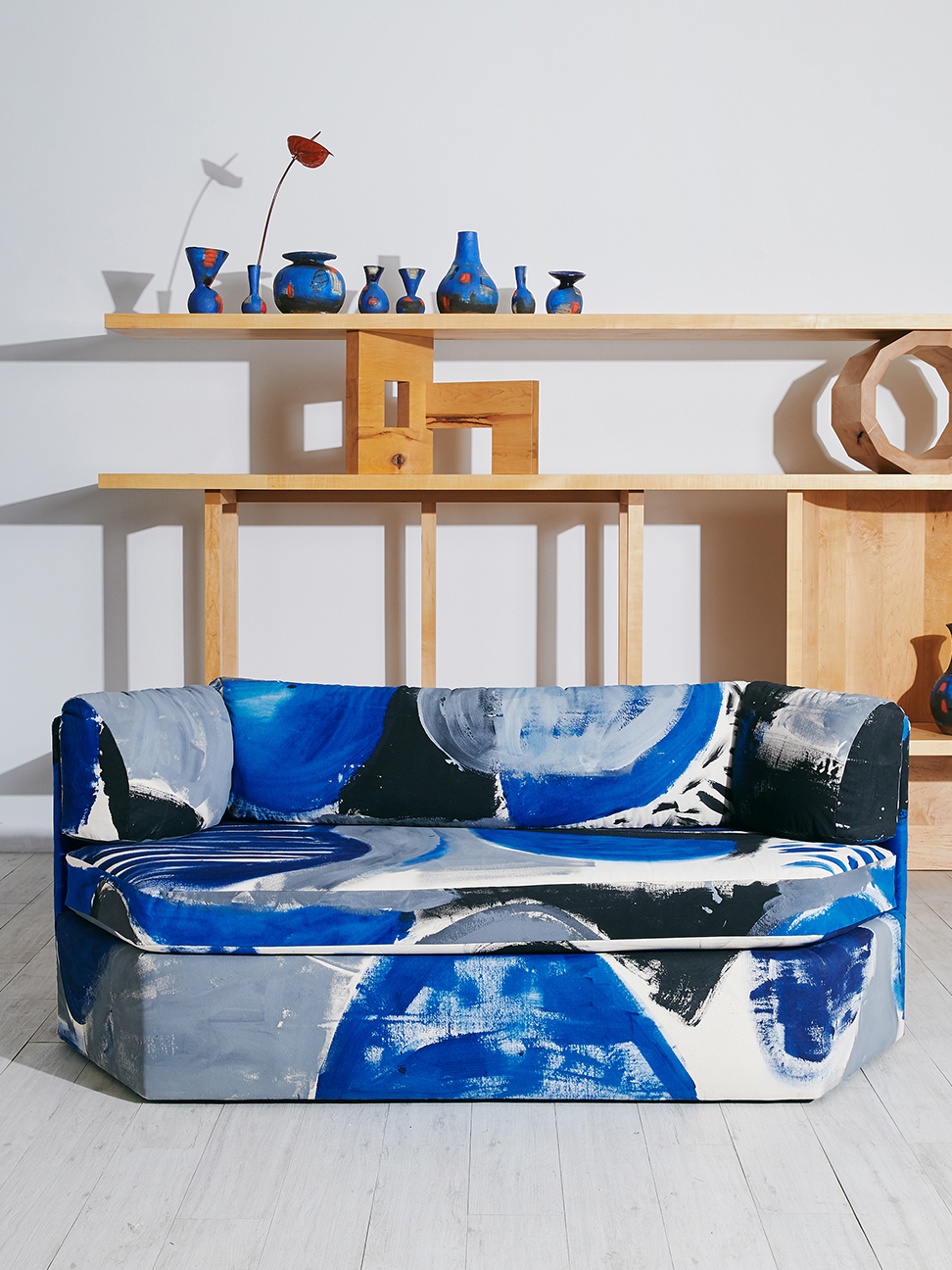This Artist Took 100 Yards of Fabric to the Beach and Made a Sofa
You can do the same.
Updated Oct 12, 2018 6:51 PM
We may earn revenue from the products available on this page and participate in affiliate programs.
At the start of summer, Naomi S. Clark dragged a piece of fabric as long as a football field to Bodega Bay in Sonoma, California, and, with the enormous sheet of cotton canvas stretched across the sand, started to paint. From afar, it looked like the artist was working on a conceptual installation‚ something in the vein of Christo’s Running Fence from the 1970s. No one would have guessed she intended to make a sofa out of it.
“Once it gets cut up, it’s hard to tell how expansive the piece is,” says Clark. After two months of on-and-off painting, she passed the material off to her trusty upholsterers, who used the abstract textile to cover a three-piece sectional. The sofa is currently on display (and for sale!) in artist-run design studio Fort Makers’s inaugural exhibition, “The Blue Room,” which pays homage to Yves Klein’s statement hue with ultramarine ceramics, cobalt jewelry, and other appropriately colored goods.
We caught up with Clark to find out more about her latest masterpiece and learned that it’s super-straightforward to DIY. Here, she shares her tips for reimagining the living room staple.
Step 1: Gather Your Supplies
For large upholstery jobs like this, Clark recommends using heavy-duty canvas and fabric paint from the hardware store (it’s permanent and can be washed or dry-cleaned without fading). “I like to stay away from plastic synthetics,” says the artist. Here’s a full list of what you’ll need:
- A sofa—save a vintage piece with a funky silhouette from the landfill by covering it in a bold graphic. (Nana Spears, the founder of Fort Makers, scoured eBay and other resale sites until she found this sectional for Clark to work on.)
- Cotton canvas (yardage will depend on how much surface area you’re covering).
- Jacquard textile paint
- A reliable upholsterer
Step 2: Lay Out Your Fabric
While it’s possible to paint directly onto the sofa, the piece will turn out better if you start with the fabric and then take it to be reupholstered. “There are different juxtapositions that appear after it’s sewn,” Clark explains. Plus, you won’t have to awkwardly move around the couch, getting distracted by the cracks and seams. Painting the fabric on a flat surface will free up your flow.
Step 3: Put Your Palette to the Test
If you want to re-create this monochromatic scheme, narrow your color family down to three or four hues. Tear off a piece of fabric and experiment with your movements. The bigger the swatch the better (Clark recommends a 36-by-36-inch square), as it will give you a good idea of what the sofa will look like in the end.
Step 4: Go Big With Your Strokes
Because Clark has been painting for nearly two decades now, she has a good idea of how her hand moves as she’s working. “It’s intuitive but also learned through experience,” she shares. For anyone who is less skilled with a brush, Clark suggests exaggerating the scale. Select a few abstract shapes (whatever speaks to you) and repeat them across the surface.
Step 5: Leave the Rest Up to the Upholsterer
Depending on how big your sofa is and where you’re located, the cost of reupholstery will vary. According to HomeAdvisor, the national average is somewhere around $650, but since you’ve already taken on the cost of purchasing new fabric, the total won’t even come close to a traditional job. The key is making sure you leave the upholsterer with enough material (Clark needed 100 yards of fabric to cover her huge sectional).
Finally, take it outside! You’ll have fresh air and enough space to work. A beach trip is optional but highly encouraged.
See more stories like this: For This French Interior Architect, Paint Belongs Everywhere But the Walls 4 Paint Projects That Took This Muralist’s Home From All-Gray to Technicolor 3 Zesty Color Combos We’re Stealing From an Ultra-Cool Roman Hotel



